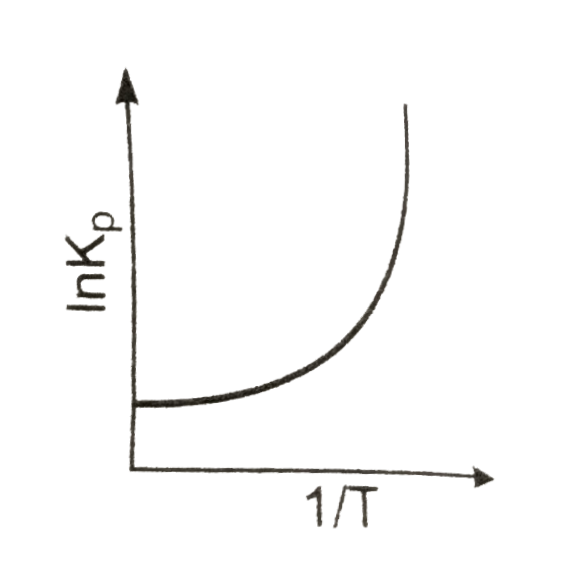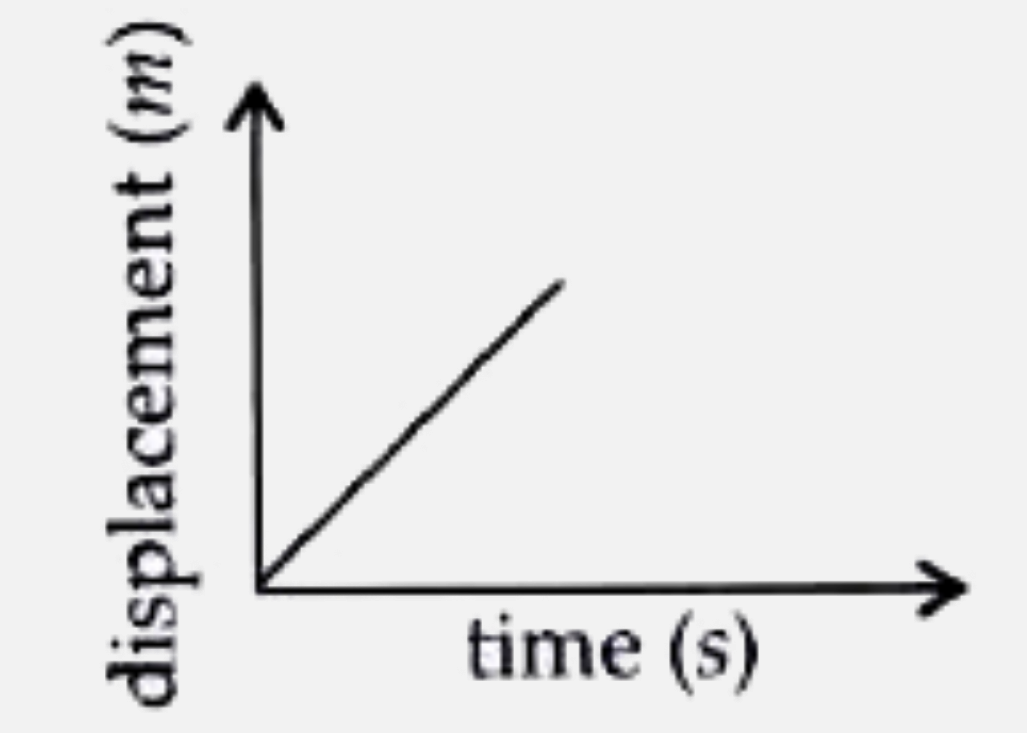An endothermic reaction is represented by the graph :




The correct Answer is:b
To solve the question regarding the representation of an endothermic reaction through a graph, we will follow these steps:
1. Understand the Thermodynamic Equation:
We start with the fundamental thermodynamic equation:
ΔG∘=ΔH∘−TΔS∘
where:
- ΔG∘ = standard free energy change
- ΔH∘ = standard enthalpy change
- T = temperature
- ΔS∘ = standard entropy change
2. Relate ΔG∘ to the Equilibrium Constant:
The standard free energy change is related to the equilibrium constant Kp as follows:
ΔG∘=−RTlnKp
where R is the universal gas constant.
3. Substitute into the Thermodynamic Equation:
By substituting the expression for ΔG∘ into the first equation, we get:
−RTlnKp=ΔH∘−TΔS∘
4. Rearranging the Equation:
Rearranging the equation gives:
lnKp=−ΔH∘R⋅1T+ΔS∘R
This can be recognized as the equation of a straight line y=mx+c, where:
- y=lnKp
- x=1T
- m=−ΔH∘R (slope)
- c=ΔS∘R (y-intercept)
5. Determine the Slope for Endothermic Reactions:
For an endothermic reaction, ΔH∘ is positive. Therefore, the slope m will be negative:
m=−ΔH∘R<0
6. Analyze the Graph Options:
Since we are looking for a graph where lnKp is plotted against 1T with a negative slope, we need to identify which graph shows a downward trend as x (or 1T) increases.
7. Select the Correct Graph:
After analyzing the options, the graph that shows a negative slope is the correct representation of an endothermic reaction.
Conclusion:
The graph that represents an endothermic reaction is the one with a negative slope, indicating that as the temperature increases (or 1T decreases), the value of lnKp also decreases.
We start with the fundamental thermodynamic equation:
ΔG∘=ΔH∘−TΔS∘
where:
- ΔG∘ = standard free energy change
- ΔH∘ = standard enthalpy change
- T = temperature
- ΔS∘ = standard entropy change
The standard free energy change is related to the equilibrium constant Kp as follows:
ΔG∘=−RTlnKp
where R is the universal gas constant.
By substituting the expression for ΔG∘ into the first equation, we get:
−RTlnKp=ΔH∘−TΔS∘
Rearranging the equation gives:
lnKp=−ΔH∘R⋅1T+ΔS∘R
This can be recognized as the equation of a straight line y=mx+c, where:
- y=lnKp
- x=1T
- m=−ΔH∘R (slope)
- c=ΔS∘R (y-intercept)
For an endothermic reaction, ΔH∘ is positive. Therefore, the slope m will be negative:
m=−ΔH∘R<0
Since we are looking for a graph where lnKp is plotted against 1T with a negative slope, we need to identify which graph shows a downward trend as x (or 1T) increases.
After analyzing the options, the graph that shows a negative slope is the correct representation of an endothermic reaction.
The graph that represents an endothermic reaction is the one with a negative slope, indicating that as the temperature increases (or 1T decreases), the value of lnKp also decreases.
Similar Questions
Knowledge Check
In endothermic reactions,
Areactants have more energy than productsBreactants have less energy than productsCreactants and products have same energyDreactants have lower temperature than products.For an endothermic reaction, where ΔH represents the enthalpy of reaction in kJmol−1, the minimum value for the energy of activation will be
Aless than ΔHBmore than ΔHCequal to ΔHDzeroAssertion : ΔH for an exothermic reaction is negative nad for an endothermic reaction is positive.
Reason : Enthalpy is an extensive property.AIf both assertion and reason are true and reason is the correct explanation of assertion.BIf both assertion and reason are true but reason is not the correct explanation of assertionCIf assertion is true but reason is false.DIf both assertion and reason are false.
An endothermic reaction which proceeds with decrease in volume will give maximum yield of the products at ……….. and …………..
View SolutionThe motion of a body is represented by the following displacement-time graph.

State the type of motion represented in the graph.
View SolutionMark the correct choice of electrolytes represented in the graph.

View SolutionFor an endothermic reaction to be spontaneous
View Solution
Which function could represents the graph above?
View Solution
